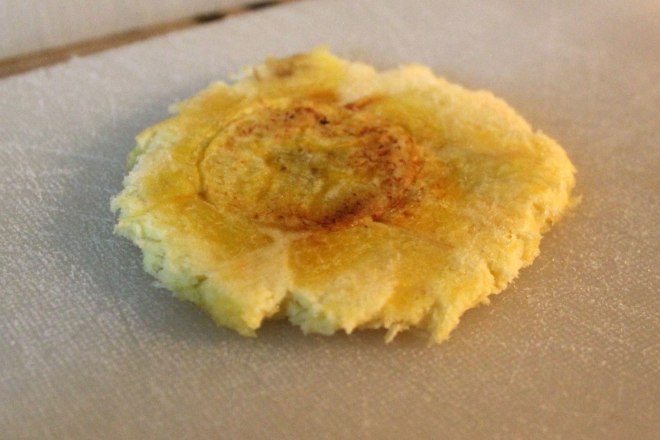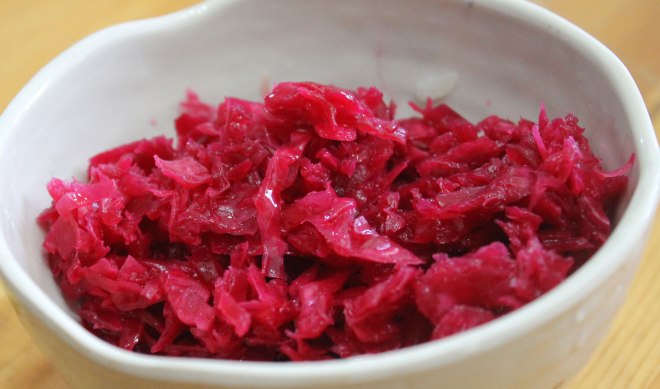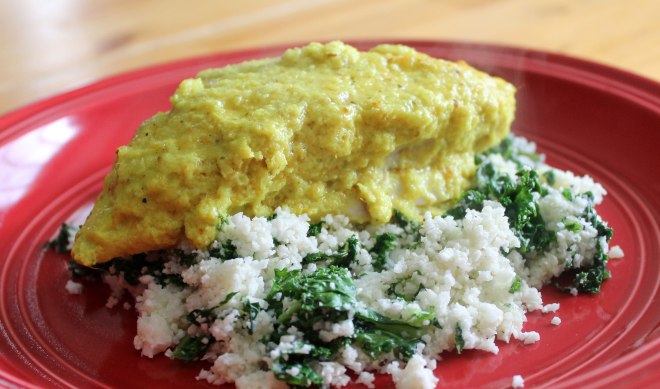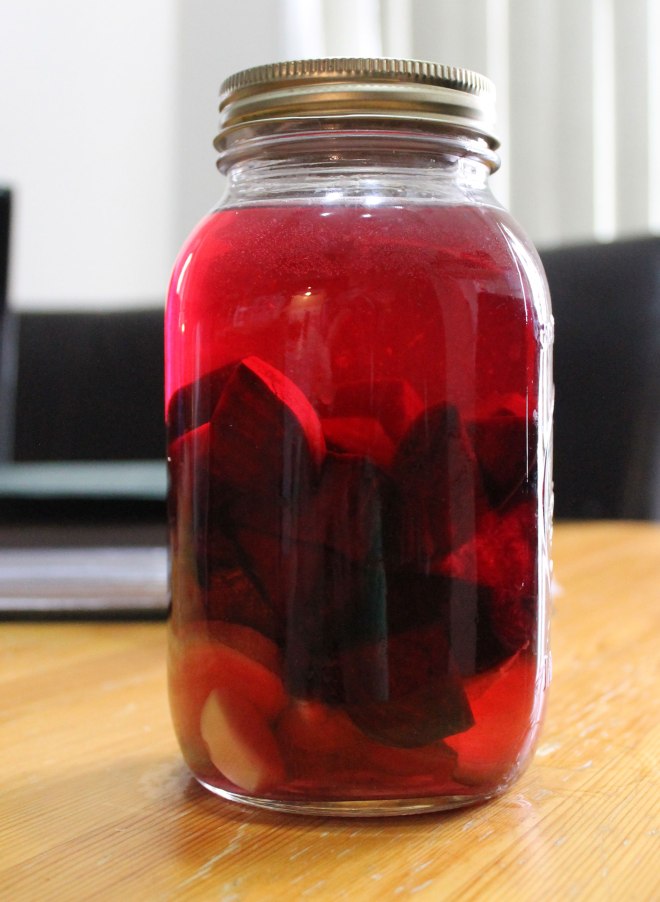Tostones are essentially a fritter made from green plantains.
They are a popular side dish and snack in many Latin-American countries, and may sometimes be called Patacones.
Essentially, they are twice-fried green plantains, and they can provide both a tasty starchy side and an appetizing crunch to many dishes.
I love to serve them as a starchy side, but I also serve them as a snack in their own right, sometimes with a dipping sauce, in much the same way as chips would be served. They are also very good with soup.
To make these, you do need the plantains to be fairly green – if they are turning yellow, they will not be starchy enough, and your tostones would turn out mushy rather than crisp and crunchy. If you have plantains that are more yellow than green, try making my caramelized sweet plantains instead!
I like The Paleo Mom’s video on green plantains, although I do not peel and cut them in the same way as she does if I am making tostones.
But if you can get your hands on some green plantains (and the greener the better really for these!) consider giving these a go!
In most Latin American countries, they use a special tool called a tostonera to flatten the plantains after their first frying – I have found that 2 cutting boards does the job perfectly well… all you need is something with a smooth flat surface so that you can press the chunks of plantain into flat discs.
These are both paleo and AIP-friendly.
These Tostones were made by A while I took the photographs of her cooking them.
Don’t be afraid of this recipe serving 4-6, it is easy to make less by simply using fewer plantains. But I suspect that once yo try these, you will want to make the full amount and keep the leftovers for snacks or other meals as they are so versatile.
Tostones – Green Plantain Fritters
Serves 4-6

- 3-4 green plantains (get the greenest ones you can)
- coconut oil or lard for frying
- sea salt to season
The first thing you need to do is to peel the plantains – this can be a little tricky sometimes, especially when they are very green. You do need them to stay in the round, so you cannot peel them in the same way that The Paleo Mom did in the above video.
What I tend to do is to cut the bottom and top off each plantain. I then cut them in half.
Next I cut a long slit along the entire length of the plantain, and I pries as much of the peel off as I can using my thumb. This can be tricky, but be patient and eventually you will get most of it off. If any bits of peel remain, just use a knife to cut them off.
Once all your plantains are peeled, you need to cut them in chunks – We tend to go for somewhere between ½ and ¾ of an inch – the thicker you cut them at this stage, the bigger your tostones will be when done, so if you want small thin tostones (more like a chip), cut them smaller, if you want thicker, bigger tostones (more like a fritter), cut them bigger.
Heat the coconut oil or lard in a large skillet over a medium high heat.
Once it is hot, working in batches, cook the plantains until golden brown on both sides. They don’t have to be completely cooked through at this stage -you are just aiming for an attractive brown colour.

Remove the plantains from the pan and cook the remaining chunks in batches.
Once all the plantain chunks are cooked you need to start reheating the oil back to medium-high.
Place one plantain chunk on a cutting board and put a second cutting board on top.

Apply pressure to the top board to squish it flat – how much pressure you use is up to you.

Light pressure results in a thicker tostone that is more like a fritter (better for serving with soups or as a side), more pressure results in a thinner, crisper tostone that will more resemble a chip.

Of course if you could get your hands on a tostonera you would use that in place of the 2 cutting boards. I have never tried this with a tortilla press, but I wonder if that might work as well – if you have one and try it, please let me know!
Once all your plantains are flatened you can start cooking the tostones.
Place a few in the heated fat in the skillet, being careful not to over-crowd it – these need to be cooked in batches to achive crispness.

Cook over a medium-high heat for a few minutes each side until golden brown and crispy.

Remove, transfer to a plate and sprinkle with a little sea salt. Continue until all the tostones are cooked.

These can be served hot or cold as a starchy side, as a snack or even as a chip with some dips.
Shared at Gluten Free Fridays #99
Shared at Real Food Fridays #46
































